Project forecasting is a critical aspect of project management that allows organizations to predict future outcomes and take proactive measures to ensure project success. Accurately forecasting a project’s outcome can be the difference between staying within budget and missing deadlines or overspending.
This comprehensive guide to project forecasting will cover everything you need to know about this essential practice, including its definition, methods, and metrics. We will also provide tips for effective project forecasting and a list of the best software available to streamline your forecasting efforts.
Whether you’re a project manager, team leader, or business owner, this guide will equip you with the knowledge and tools to forecast your next project’s success confidently.

What is Project Forecasting?
Project forecasting predicts future project outcomes based on historical and current project data. It allows project managers and stakeholders to anticipate the likelihood of project success, identify potential risks and opportunities, and make informed decisions about resource allocation, budgeting, and scheduling.
Forecasting is an iterative process that involves continually reviewing and updating project data to refine predictions and make adjustments as necessary. Project forecasting is a vital component of project management that enables organizations to stay on track and achieve project goals while minimizing risks and costs.
What Metrics Would You Forecast for the Project?
There are several metrics or indicators that project forecasting considers, such as:
Project Duration
Duration is one of the most critical metrics to forecast when planning a project. Forecasting the duration of a project allows stakeholders to determine how long it will take to complete and whether or not deadlines can be met.
The duration of a project is usually estimated by looking at historical data and taking into account any external factors that could affect the timeline, such as weather, regulations, or market conditions. The duration can then be adjusted based on available resources and expected workloads for team members.
Costs
Your project may involve many cost factors. It’s essential to accurately predict the total cost of a project before it begins, as this helps stakeholders make informed decisions about budgeting and resource allocation.
The costs associated with a project may include:
- Materials,
- Personnel labor,
- Equipment rental or purchase,
- Legal fees,
- Taxes and other expenses.
When forecasting costs for a project, consider all potential factors that could affect the total cost and adjust them accordingly.

Resources Needed
Most projects involve personnel, equipment, materials, and other resources that must be accounted for when estimating duration and cost.
When forecasting resource needs for a project, consider the personnel required to complete tasks or activities and any special training or certifications they may need. You should also factor in any additional material costs associated with completing the project.
Finally, consider how long it will take to obtain any necessary equipment or supplies before beginning work on the project.
Expected Quality Of Deliverables Or Outcomes
While quality estimation may not be a straightforward metric to forecast, it is still essential for project success. Quality of deliverables or outcomes refers to the extent to which they meet the organization’s standards.
When forecasting quality, consider factors such as the level of expertise required for each task, potential risks that could affect results, and external conditions that could impact delivery times or costs.
Risks Associated With The Project
Project forecasting also takes into account potential risks associated with the project. Risk analysis is a critical part of project management that helps identify and assess possible threats to the project’s success.
By understanding the risks, stakeholders can develop strategies to mitigate or avoid them altogether, thus increasing the probability of success for the project. Examples of risks include factors such as natural disasters, technical issues, market conditions, personnel turnover, and budget constraints.
Time Spent On Tasks Or Activities
Before you begin your project, you should have a clear idea of how long each of your team members will spend on each task or activity. This will help you manage the project resources better and ensure that tasks are completed in a timely manner. It can also help you to adjust the project budget and timeline if need be.
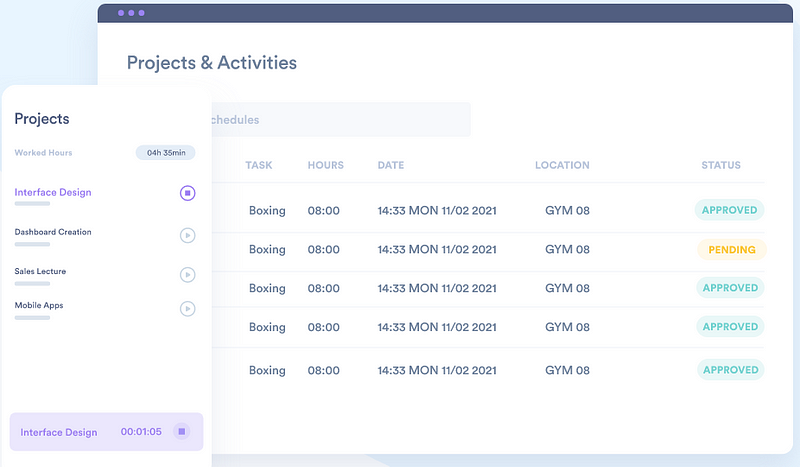
Performance of Team Members
While the performance of team members is not always easy to predict, it can be a valuable indicator of project success. Forecasting the performance of team members allows organizations to identify areas where individuals may need additional training or support in order to reach their goals.
Forecasts can also inform decisions about staffing and task assignments by revealing which team members are best suited for particular tasks or activities. This helps ensure that project teams comprise the right people with the necessary skills and experience for successful completion.
Project Forecasting Methods
Now that we know what metrics you should forecast for your project, let’s look at two of the methods you can use.
Qualitative Forecasting
Qualitative forecasting methods rely on subjective judgments and expert opinions to predict future project outcomes. This type of forecasting is best used for projects in uncertain environments with limited data available, such as new product development or market research.
Qualitative forecasting involves gathering input from stakeholders, customers, and team members to generate predictions based on their expertise and experience. Standard qualitative techniques include
- Delphi Method: This method involves a panel of experts answering questions about the project in an anonymous survey. The responses are then compiled and analyzed to create forecasts.
- Nominal Group Technique (NGT): NGT is similar to Delphi but involves participants working together to generate predictions.
- Brainstorming: Brainstorming sessions with participation from all stakeholders can be used to generate ideas and forecasts for the project.
- Scenario Analysis: Scenario analysis involves examining possible futures based on current trends and conditions.
- Forecast by Analogy: Forecasting by analogy uses similar past projects or situations to generate predictions about the current one.
- Market Research: Market research surveys, interviews, and focus groups can provide valuable insights into customer needs, preferences, and behaviors that can help inform forecasting decisions.
Quantitative Forecasting
Quantitative forecasting is a data-driven approach that uses statistical models and historical data to predict future outcomes. This type of forecasting is best used for projects in stable environments with easily accessible data, such as software development or marketing campaigns.
Standard quantitative forecasting methods include
- Trend analysis: Here, you identify trends in the data and extrapolate them to predict future outcomes. This is one of the most commonly used quantitative forecasting methods, as it is relatively straightforward and does not require complex statistical models.
- Break-even analysis: You will use this method to identify your project’s profitability point. This will help you determine when its revenues will offset the costs associated with a project.
- Cost-benefit analysis: You compare the potential benefits and costs of different scenarios or decisions to select the most cost-effective path forward.
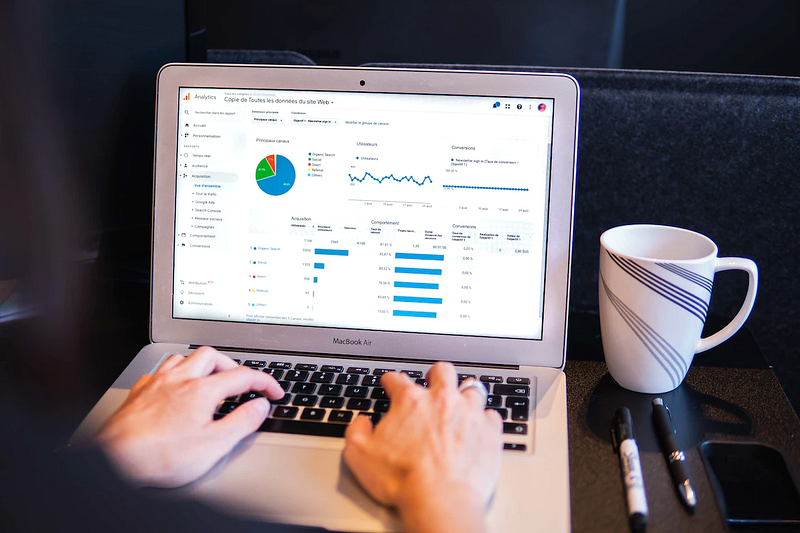
Project Forecasting Best Practices
Project forecasting should be a priority for any project manager or team leader. Here are some of the best practices to keep in mind when creating a forecast:
Create Several Forecasts with Varying Levels of Outcomes and Risks
When forecasting, it’s important to create multiple forecasts with different assumptions. This will help you understand possible outcomes and prioritize risks accordingly. It also provides a better insight into how changes in scope or timeline might affect your project.
For example, you can create a baseline forecast based on your current data and assumptions, then create alternative forecasts that consider different levels of risk. This will give you a better understanding of how risks can impact your project and help you adjust accordingly.
Use a Project Forecasting Software for Automation
Project forecasting software automates the process of gathering, analyzing, and visualizing data. It helps project managers collect real-time data from multiple sources and quickly generate forecasts with accurate results.
A project forecasting solution will save you time and money by streamlining your analysis process. It also reduces errors due to manual calculations and provides insightful reports for better decision-making.
Work with Real-time Data
Project forecasting is only as effective as the data it relies on. When possible, use real-time data to accurately picture your project’s progress and future prospects. This can include everything from customer feedback to employee performance metrics.
Real-time data will give you a more complete view of your project and allow you to make better decisions about budgeting, scheduling, resource allocation, and other critical aspects.
Have Contingency Plans and Resources
Whatever you plan, there will always be unexpected events and circumstances that can disrupt your project. That’s why it’s important to create contingency plans with resources in mind, so you can quickly adjust if things don’t go as expected.
Your contingency plan should include alternative strategies for the worst-case scenarios and identify potential risks before they become problems. This will ensure that you have a backup plan in place when something goes wrong and help you stay on track even if there are delays or other issues.
Communicate to Stakeholders Clearly
Project forecasting is a team effort, and it’s important to keep stakeholders informed of progress and changes. Communicating the forecasts clearly will help everyone understand the potential risks and outcomes associated with the project.
It’s also essential to provide detailed reports on the current state of the project, as well as any future assumptions or forecasts. This will ensure that everyone is on the same page when making decisions about resource allocation, budgeting, and scheduling.
Track Performance as You Go
Finally, project forecasting is not a one-time event. It’s an ongoing process that involves regularly tracking performance and adjusting forecasts accordingly. Keeping track of your project’s progress will help you identify any potential risks or opportunities early on and make necessary changes to ensure success. This is something you can do effectively with project forecasting software.
Best Project Forecasting Software to Consider
Project forecasting requires a variety of tools and software to ensure accuracy and efficiency. Here are some of the best project forecasting software to consider:
1. Day.io – Best Time Management and Forecasting Software
Day.io is a powerful time management and forecasting tool designed to help project managers plan, manage, and track projects more efficiently. You will get accurate time tracking and scheduling features, as well as a forecasting feature that allows you to plan and adjust resources in real-time.
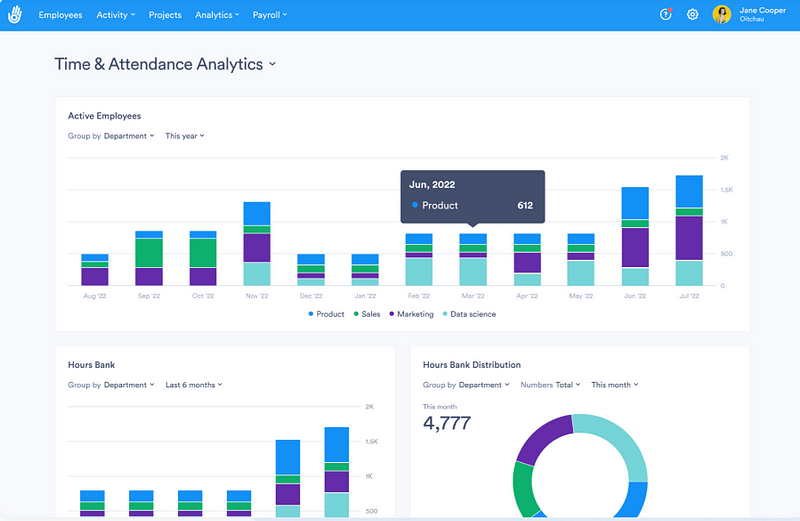
The software lets you automatically generate invoices and timesheets, set up custom notifications, and track progress with comprehensive dashboard views. Day.io is a great fit for teams of all sizes that need to forecast projects accurately and quickly.
Features
- Detailed time-tracking with breaking down to subtasks
- Integrated calendar with tasks, events, and meetings
- Automatic alert system for due dates
- Project planning, scheduling & forecasting
- Time clock with automatic timesheet creation
- Real-time reporting of progress and productivity metrics
- Flexible budgeting & cost management tools
- Data sharing capabilities between users in the same organization
- Advanced reminders for upcoming deadlines or overdue tasks
- Customizable user roles with permission levels to ensure data security
Pricing
Project and time tracking plans start from $6 per user/month.
2. Asana – Best for Forecasting with Strong Integration Capabilities
Asana offers excellent project forecasting capabilities with its powerful project management suite. The software allows you to plan projects, assign tasks, and manage resources easily. It also has robust integration features that make it easy to connect your data from various sources for improved accuracy and faster decision-making.
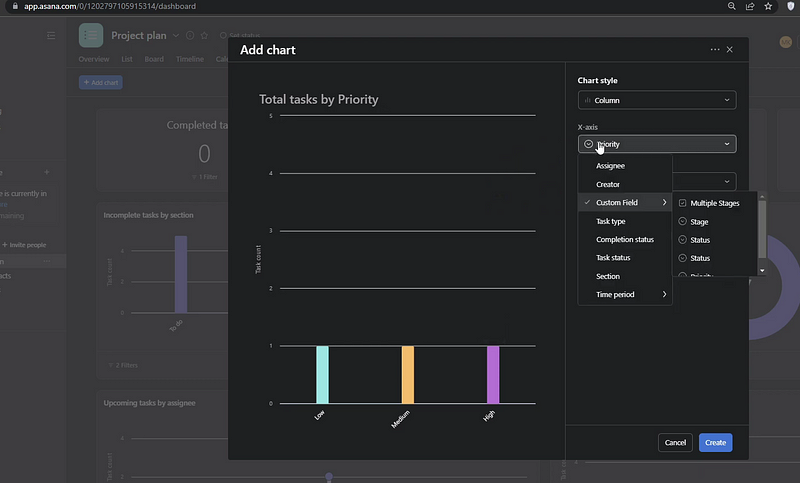
You can track progress on the built-in dashboard, set up custom workflows, and access detailed reports to help with forecasting outcomes. Asana is a great choice for larger teams looking for an all-in-one tool for project planning and forecasting.
Features
- Full range of resource and project planning tools
- Task scheduling and timeline views
- Gantt chart support
- Integration with multiple third-party applications
- Real-time updates and notifications
- Collaboration and communication tools
Pricing
- Basic: Free, basic project management features only, not suitable for project forecasting
- Premium: $13.49 per user/month
- Business: $30.49$ per user/month
3. Jira – Most Comprehensive for Cost Forecasting
Jira is a comprehensive project management and forecasting tool that enables organizations to plan, track, and monitor projects with ease. The software features best-in-class cost forecasting capabilities that allow you to estimate project costs accurately in real-time.
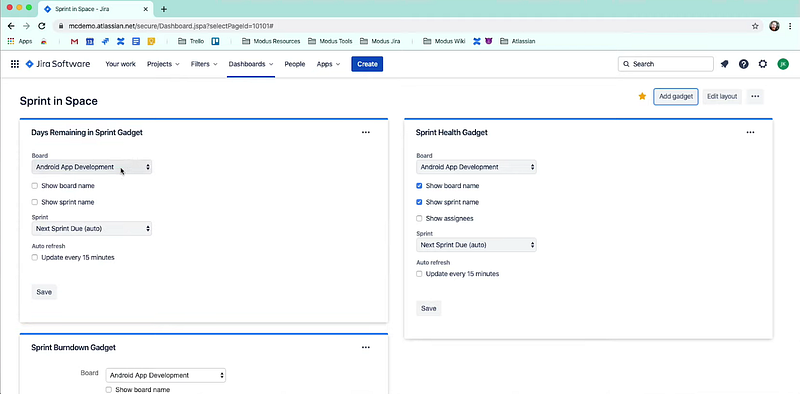
Features
- Planning, tracking, and releasing projects
- Cost forecasting with budget and resource management
- Robust issue tracking with configurable workflows
- Advanced reporting capabilities
- Collaborative team communication tools
- Integrations with third-party applications
Pricing
- Free: $0, suitable for basic project management only
- Standard: $7.75 per user/month
- Premium: $15.25 per user/month

Wrap-Up: Project Forecasting
In this article, we have covered the key concepts and best practices for effective project forecasting, including the different types of forecasting methods, common metrics and indicators used, and tips for success. We have also highlighted some of the best project forecasting software available to streamline your forecasting efforts.
With this knowledge and these tools at your disposal, you can confidently forecast your next project’s success and achieve your project goals. Want to supercharge your project forecasting. Try Day.io as the most reliable project forecasting software.
